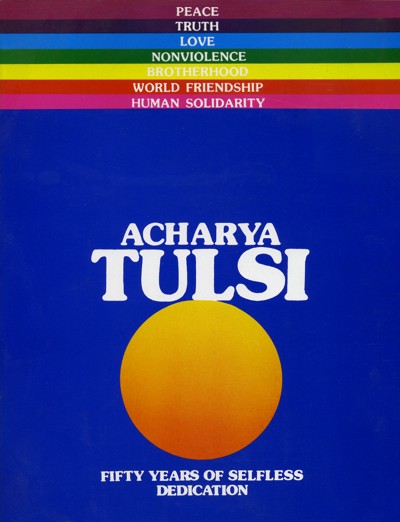I consider it a proud privilege that Providence vouchsafed me an opportunity to offer my homage to the saint, Acharya Tulsi, in person twice in my life. During my second visit to Delhi, where the Guru Maharajaji, was engaged in preaching the secrets of Jain religion, I was permitted to read the Jain-asiddhantadipika written by him with Swami Nathmalji now Yuvacharya Mahapragya, an erudite scholar and direct disciple of the saint. I was surprised to see that the whole gamut of Jain thought, including metaphysics, cosmography, religion and ethics, was so succinctly expounded in this work as had never been essayed by any other scholar before. With the progressive growth of interest in Indian philosophical thought and religion in the universities of India students of philosophy are eagerly looking forward to the publication of new books and expositions of our ancient thought.
When I was granted the privilege by His Holiness to read the Jainasid-dhantadipika in manuscript with Swami Nathmalji, I was simply transported with joy to find that this was the book which would remove the painful desideratum. I found that many of my obscurities and puzzles were so lucidly cleared up in this work. Even years of devoted study of the Jaina classics would not succeed in making some of the fundamental problems perfectly intelligible to a modern mind, particularly if he had no guidance of a teacher at every step. But the study of this work as a preliminary textbook would give the student a perfectly clear conception and thorough comprehension of the basic problems. I made a humble request that the book should be published without loss of time so that it could be made a textbook in the universities of India. I can assure the authorities concerned that the study of this single book will enable a student of philosophy to acquire with comparative ease and comfort the knowledge of the fundamentals of Jain thought and this knowledge will be perfectly dependable and unerring.
It is desirable that this illuminating work of Acharya Tulsi should have an English rendering and exposition so that it can have wide circulation in Europe and America. □
 Dr. Satkari Mookerjee
Dr. Satkari Mookerjee
